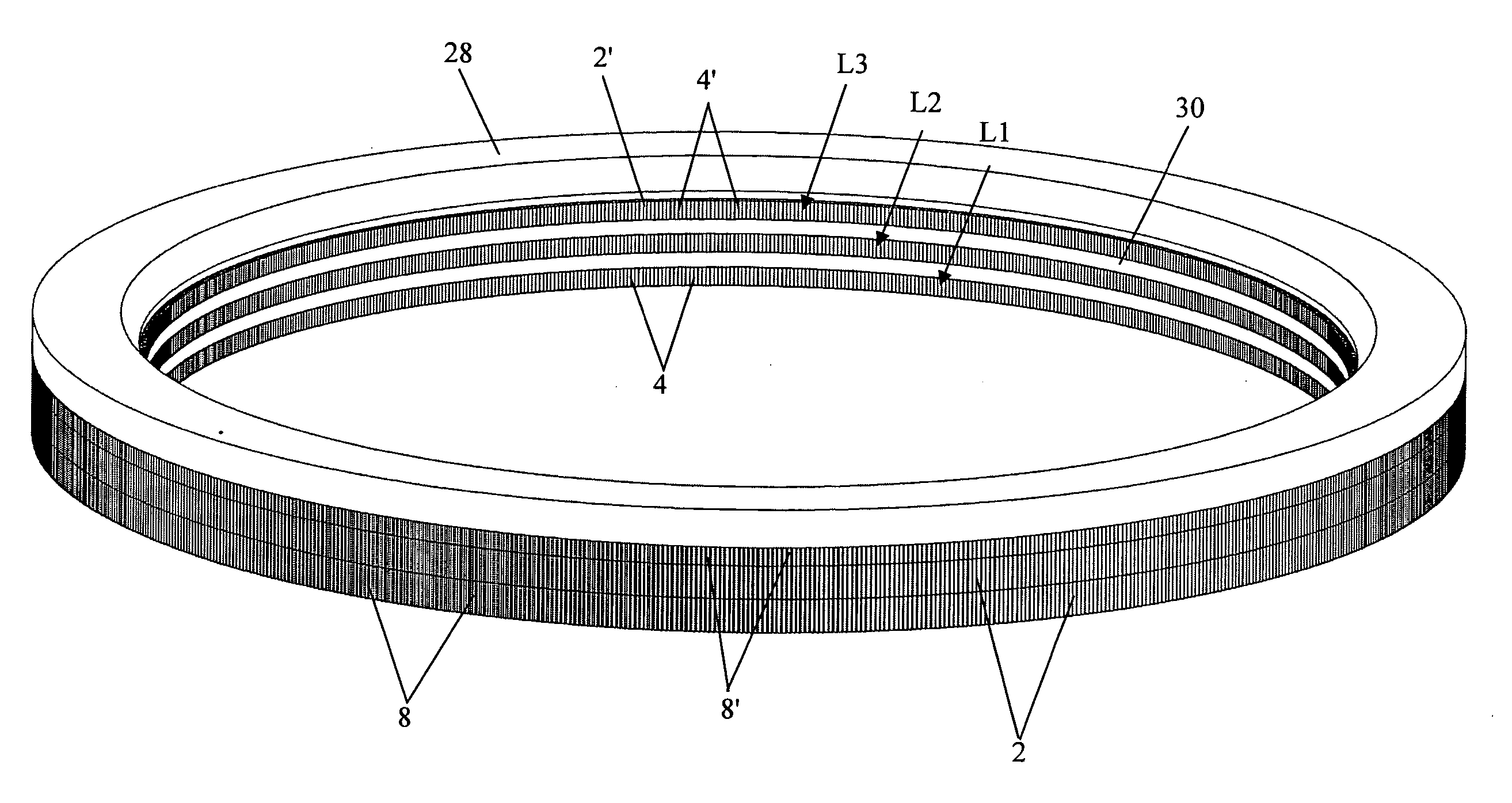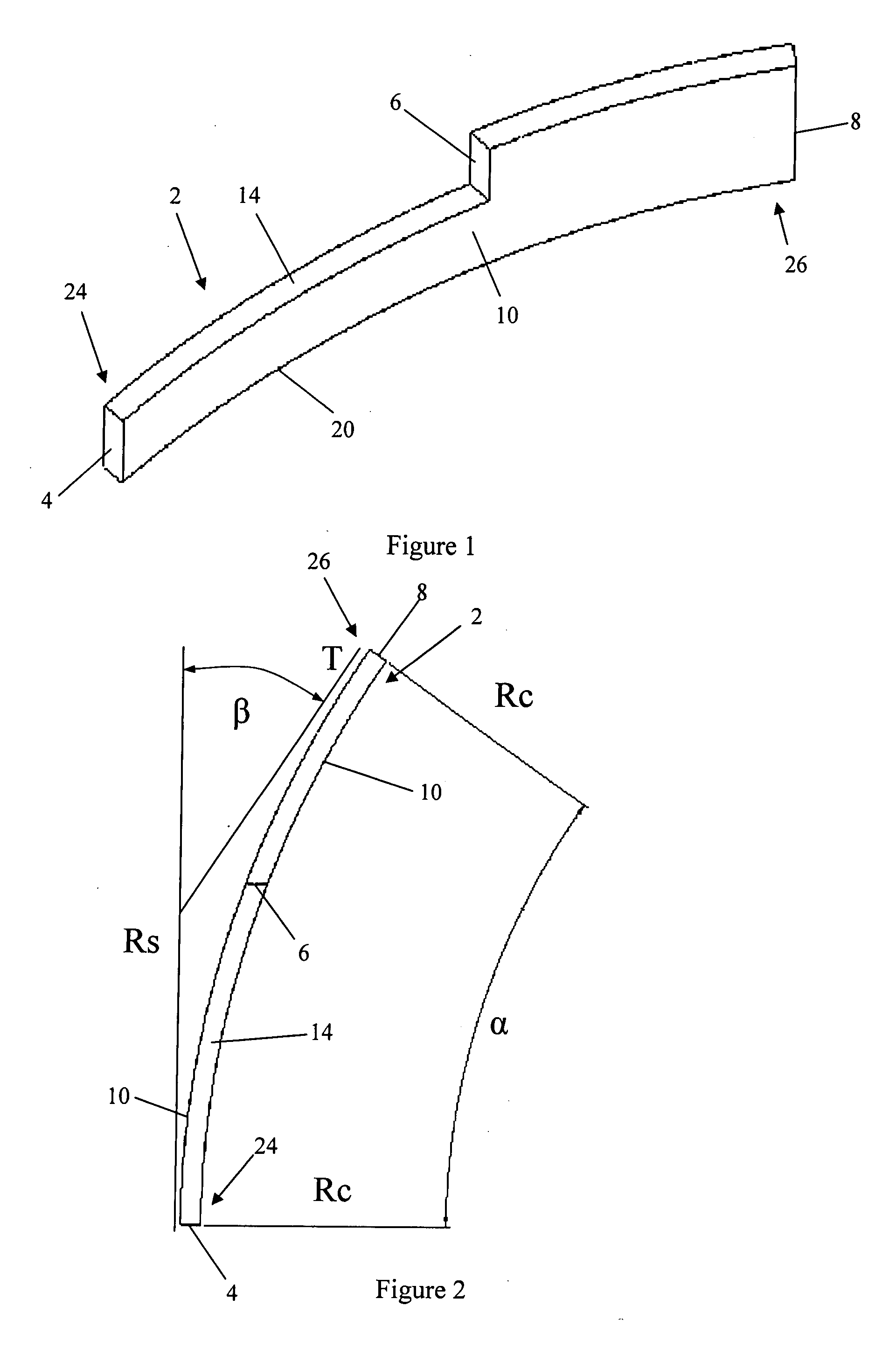Tubular electrical machines
a technology of electrical machines and tubular bodies, which is applied in the direction of electrical apparatus, dynamo-electric machines, sea energy generation, etc., can solve the problems of tubular electrical machines having the physical size, the need to control the eddy current in the core of the stator, and the control of the eddy curren
- Summary
- Abstract
- Description
- Claims
- Application Information
AI Technical Summary
Benefits of technology
Problems solved by technology
Method used
Image
Examples
Embodiment Construction
[0038] With reference to FIGS. 1 and 2 a lamination 2 for forming a stator of a tubular electrical machine is punched out of a blank of electrical steel and then mechanically pressed to adopt a curved shape. The thickness of the electrical steel can be the maximum available in conventional electrical steels (currently about 1 mm) but thinner or thicker steels can be used. The laminations can be pre-insulated or coated with a thin film of insulating material after forming. The lamination 2 has an L-shaped or stepped configuration and includes a first radially inner edge 4 that forms part of the cylindrical inner surface of the stator, a second radially inner edge 6 that forms part of a cylindrical end surface of a slot for receiving a coil C of a stator winding (FIG. 6 to 8) and a radially outer edge 8 that forms part of the outer surface of the stator. The lamination 2 is curved to extend along an arc of a circle of predetermined diameter. The degree of arc a along which the laminat...
PUM
 Login to View More
Login to View More Abstract
Description
Claims
Application Information
 Login to View More
Login to View More - R&D
- Intellectual Property
- Life Sciences
- Materials
- Tech Scout
- Unparalleled Data Quality
- Higher Quality Content
- 60% Fewer Hallucinations
Browse by: Latest US Patents, China's latest patents, Technical Efficacy Thesaurus, Application Domain, Technology Topic, Popular Technical Reports.
© 2025 PatSnap. All rights reserved.Legal|Privacy policy|Modern Slavery Act Transparency Statement|Sitemap|About US| Contact US: help@patsnap.com



